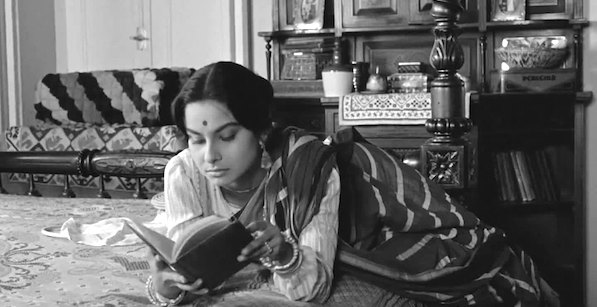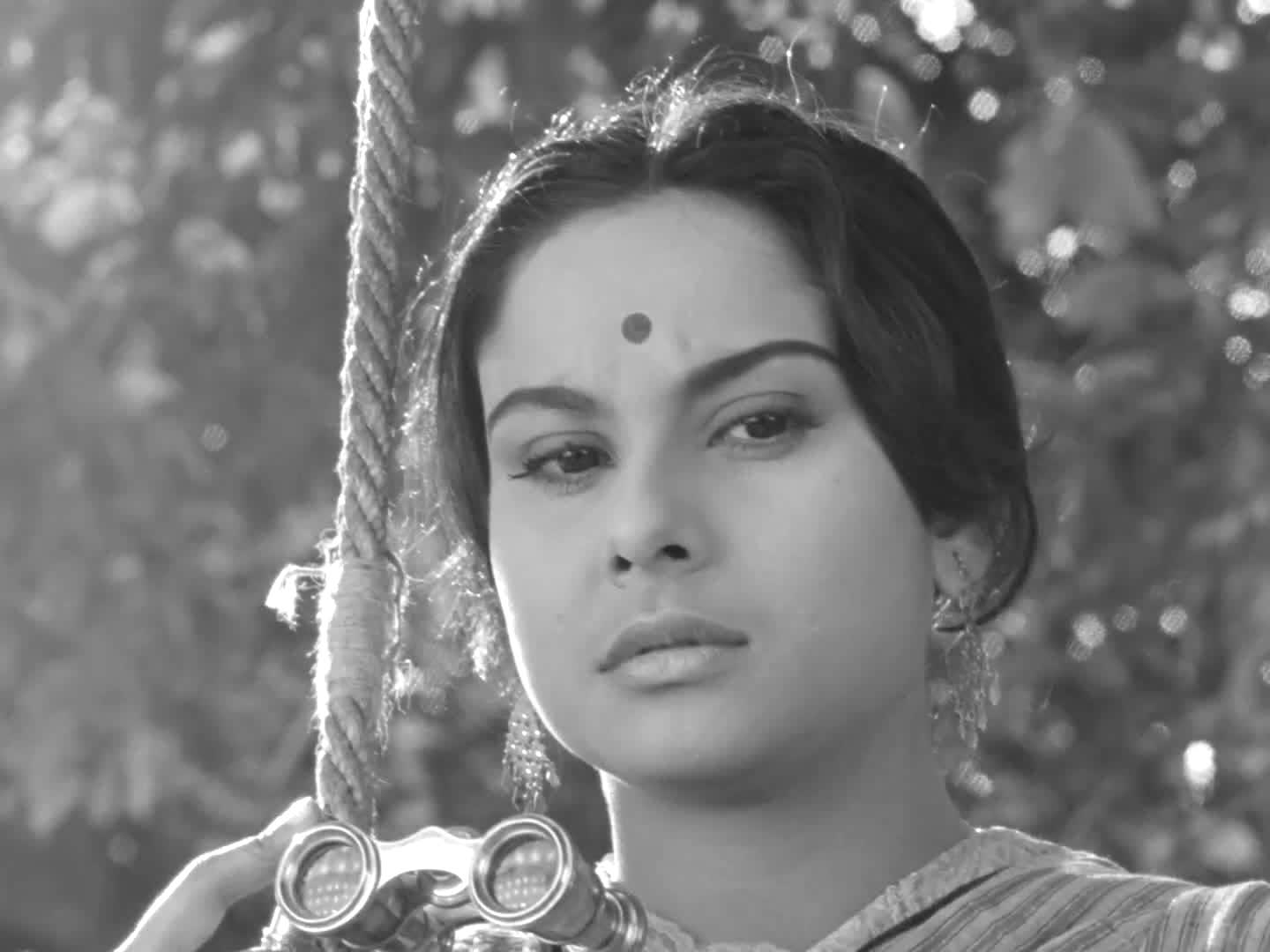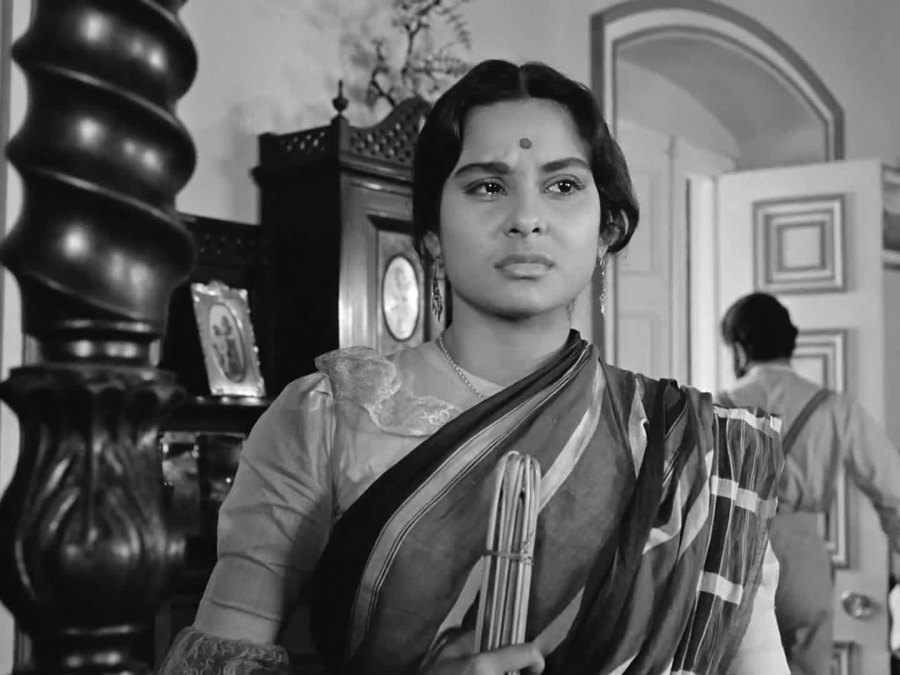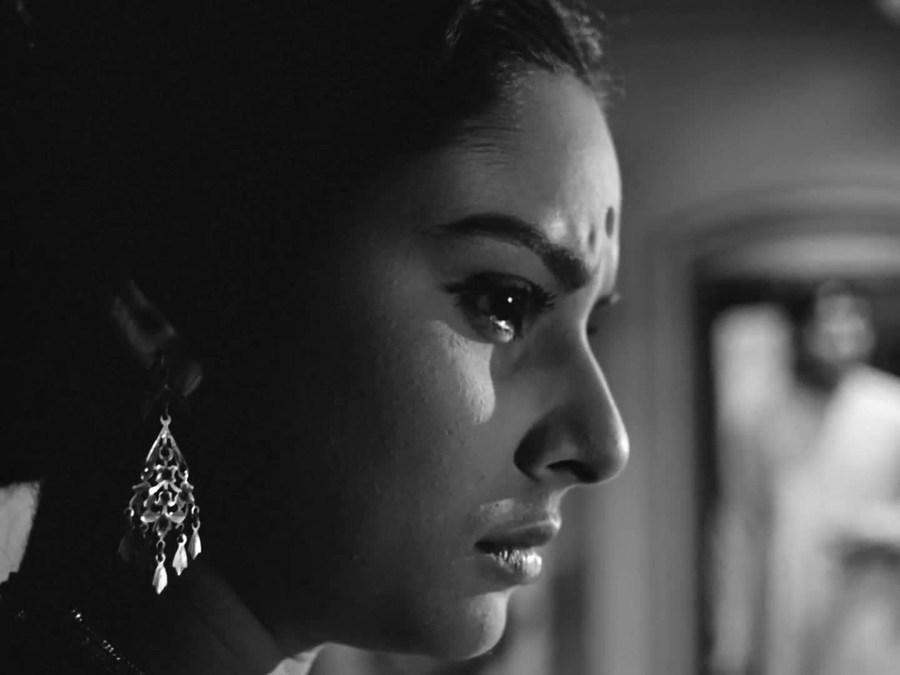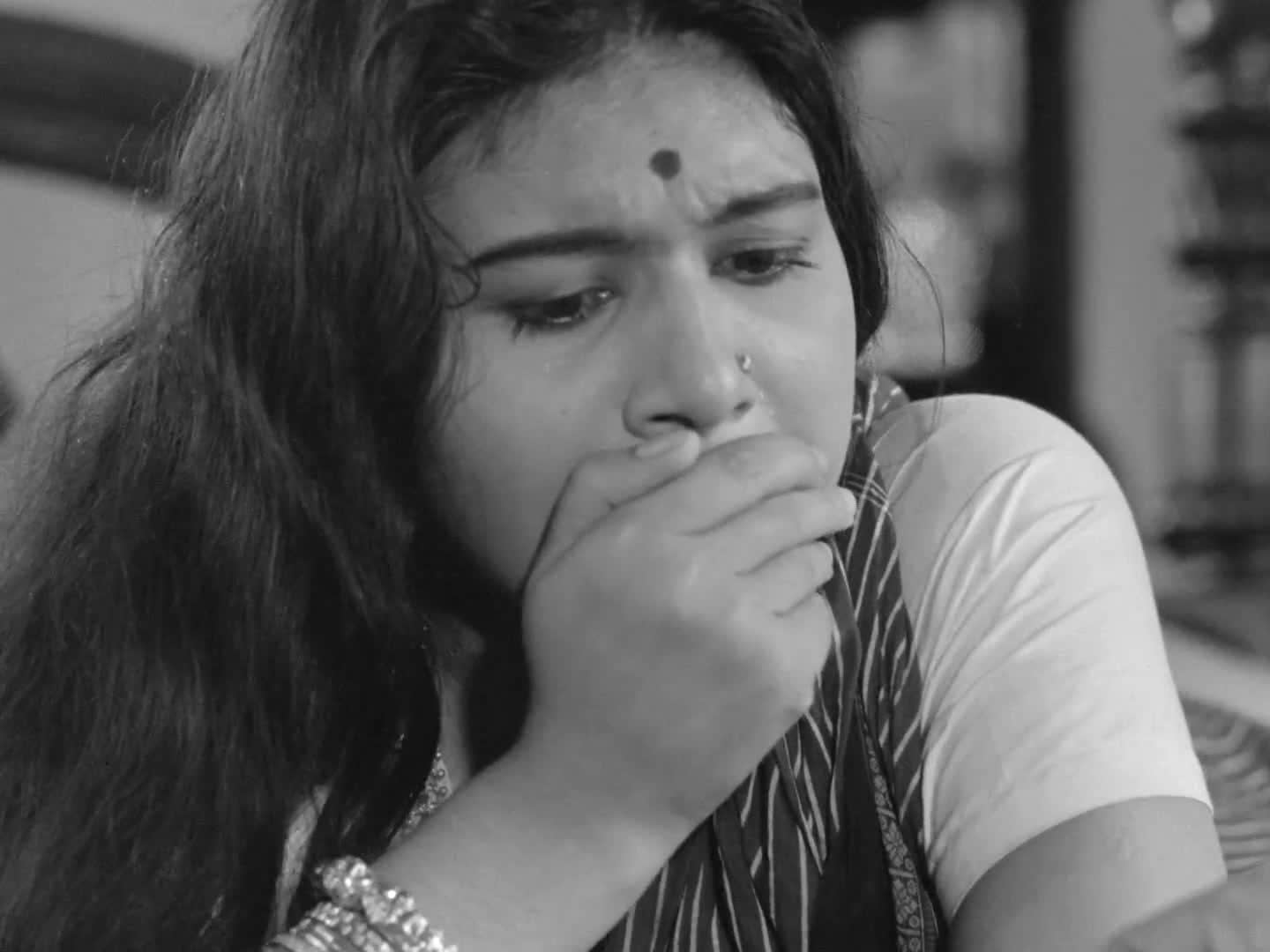Every week, in The New York Times’ Sunday Book Review, a question about the world of books is posed to two writers, who then offer their (usually) articulate responses. One question asked in the beginning of November was “Have You Ever Had a Relationship End Because of a Book?”
Zoë Heller, author of Notes on a Scandal (shortlisted for the Man Booker prize), delved eloquently into a past relationship that had failed because of book-related quarrels between the two bibliophiles. For Zoë’s partner, taste in literature was so integral to one’s personality that he could not stomach her dislike of a book he loved.
This relationship ended very soon for Zoë, understandably, but the protagonist of Satyajit Ray’s Charulata would have given her right arm and leg to be in her place. Charulata, a young and beautiful woman living in Bengal in the 1880s, is married to Bhupatinath Dutta, a liberal and intelligent man who inarguably cares for her. But Bhupatinath is so myopic—his newspaper and politics are all that matter—and blissfully ignorant of the lure of the arts—finding them trivial—that his wife, who would like nothing else than to immerse herself in literature, suffocates every day. She has no one to argue about books with because no one she knows reads them.
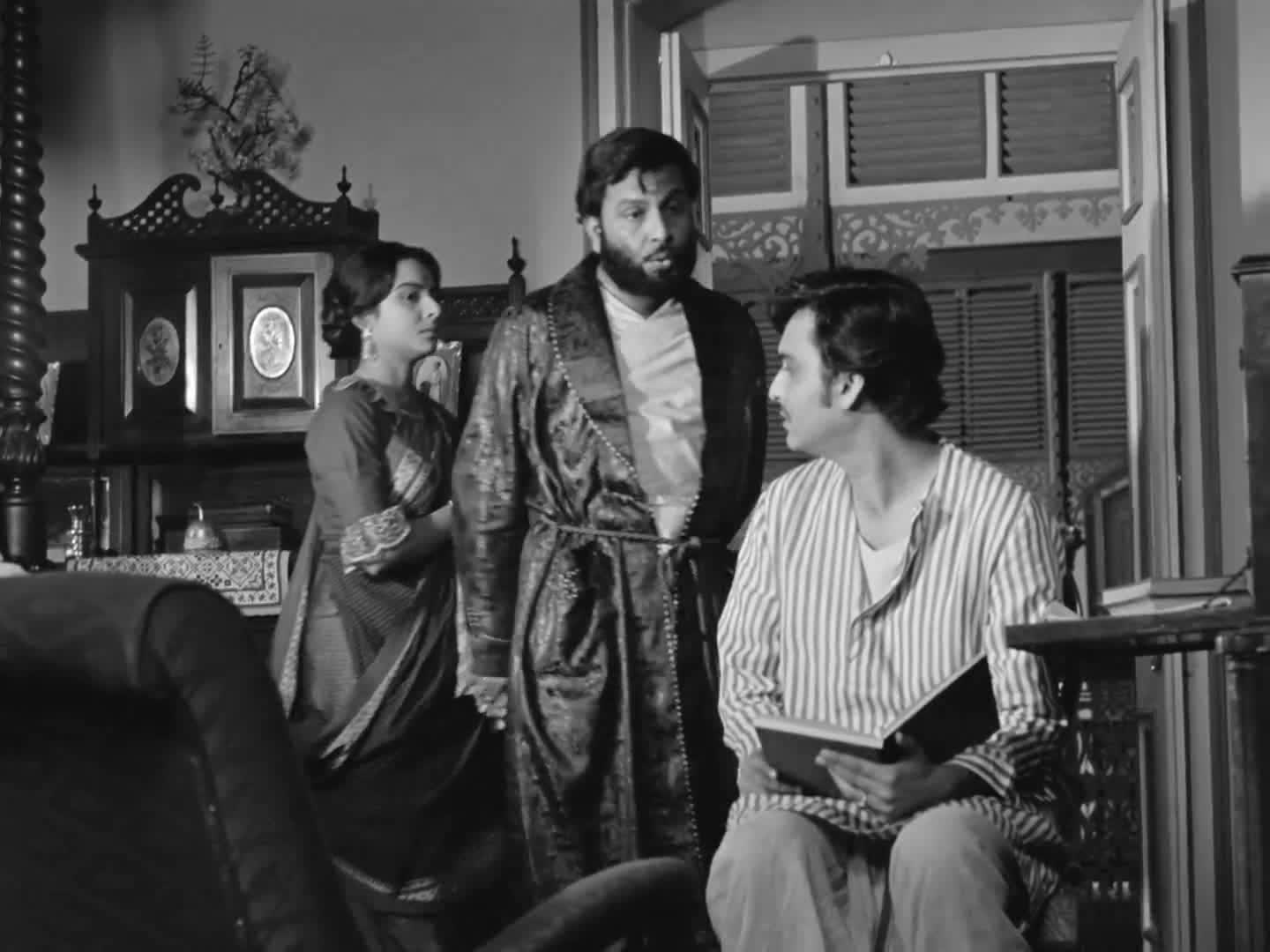
Sensing his wife’s boredom but not the cause of her frustration, Bhupatinath asks for Charulata’s brother, Umapada, and his wife, Manda, to join them. Umapada is anointed manager of the fledgling newspaper while Manda tries to keep Charulata—and herself—entertained. However, the illiterate and rather frivolous visitor is no match for her highly learned host. Soon after, Bhupatinath’s dilettante young cousin, Amal, also arrives; finally Charulata has someone who understands her passions. Amal is assigned the duty of helping Charulata write—and checking if she’s any good—but what was supposed to be an acquaintance quickly turns into friendship, which then turns into something much more.
Simply put, the film is an adaptation of Rabindranath Tagore’s novella, Nastanirh (The Broken Nest), and by the end, the title turns out to be extremely apt.
Pather Panchali may be the most iconic film Ray ever made, but many people consider Charulata one of his best—including the filmmaker. He once said, in an interview with Cineaste, “[It’s] a film that I would make the same way if I had to do it again.”
And there’s definitely a lot of goodness here, even by the high standards of anything part of Ray’s oeuvre. The evocation of Calcutta in the 1880s and its cultural milieu is superb, fully justifying its position as an artistic powerhouse in India at that time. Little of the film was shot on location; Ray worked with his art director, Bansi Chandragupta, to meticulously create in the studio the bungalow he had envisioned. The result is beautiful, a testament to Ray’s eye for detail and fastidiousness in research.
The acting is beyond reproach. Madhabi Mukherjee gives one of the great performances as Charulata; any shot of her large, watery eyes and the transfixing bindi on her forehead conveys more ethos and pathos than some entire screenplays. One of the film’s best parts relies virtually exclusively on Madhabi’s emotiveness. Almost ten minutes long, and nearly wordless, the sequence sees her swinging back and forth in a garden as she watches Amal, nearby, write. She slowly realizes her love for the man, and we as an audience know that boundaries have been crossed.
Another memorable sequence revolves around a tumultuous conversation between Bhupatinath and Amal as the former describes a wonderful marriage proposal he has received for the latter. The older man extols the benefits of taking up the offer—a stint in England, barrister training, proximity to titans like Gladstone and Garibaldi—while all the younger one can think of is the musical way the word “Mediterranean” rolls off his tongue. As the two polar opposites pontificate about their fantasies, Charulata stands in the corner, separated by a veil—both physical and metaphorical.
This exchange nearly redeems what for me is the film’s most troubling aspect. It is so obvious which side has Ray’s sympathies—an artist himself who, moreover, studied in a university founded by Tagore—that there’s an overwhelming feeling of the deck being stacked against Bhupatinath. His oversimplified characterization doesn’t help.
Also, I sincerely believe there’s another character here—a female one too—who is suffering from a more interesting crisis than Charulata’s: Manda. She can’t read, and is hence excluded from the practically snobbish bonhomie between Charulata and Amal. She is unhappy with her life, as a struggling husband’s misfortunes have placed her in this unfriendly environment. She also flirts with Amal at times; their last exchange reveals the magnitude of her emotions. And she’s wrestling with a moral crisis, standing up for her husband even as he does something despicable. I would love to watch a film about her.
That isn’t happening anytime soon. Till then you should watch Charulata, a towering achievement on multiple fronts. When it was finished, the Cannes Film Festival in 1965 rejected it. However, forty-eight years later, they screened it in the Cannes Classics section.
Guess Ray did have the last laugh.

